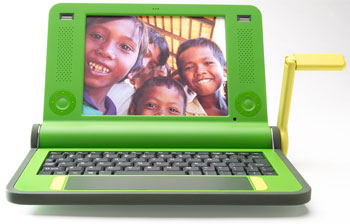$100 laptop for poor children will cost $130
$100 laptop for poor children will cost $130
mongabay.com
February 15, 2007
The $100 laptop designed for poor children in developing countries looks like it will cost $130, at least initially, according to the computer’s manufacturer, Quanta Computer Inc. In a statement Thursday, Quanta said it can ship between 5 million to 10 million units this year as part of the One Laptop Per Child (OLPC) project, an effort launched by Nicholas Negroponte of the MIT Media Laboratory.
To date, said Quanta, seven countries have signed up for the project. These include Argentina, Brazil, Libya, Nigeria, Rwanda, Thailand and Uruguay.
Quanta will make a profit on each machine sold.
The laptops have been billed as a durable low-cost PC for children in developing countries. The project has received support from Google, AMD, Brightstar, News Corporation, and Red Hat. Bill Gates, co-founder of Microsoft criticized the computer in March 2006 but by December it became evident that Microsoft was indeed involved in the effort.

|
Early versions of the laptop, the first generation of which offers 128MB of memory (RAM) and 512MB of storage, began shipping in November.
The laptop, which was tested by the U.S. State Department in mid-November, is WiFi- and cell phone-enabled, and can be powered using a hand-crank. It is designed to be used in harsh environments such as remote rural areas in developing countries. The weather-proof laptops will available in some 30 colors.
The U.N. has voiced approval for the project.
“When they start reaching the hands of the world’s children, these robust and versatile machines will enable kids to become more active in their own learning,” said Kofi Annan, former Secretary-General of the U.N., in comments made at the World Summit on the Information Society in 2005. “Children will be able to learn by doing, not just through instruction or rote memorization. And they will be able to open a new front in their education: peer-to-peer learning.”